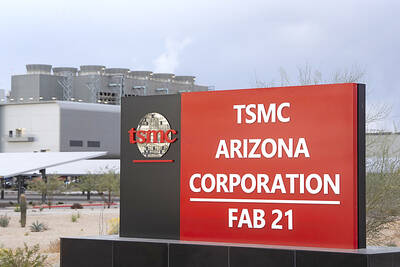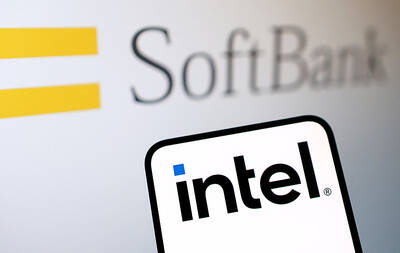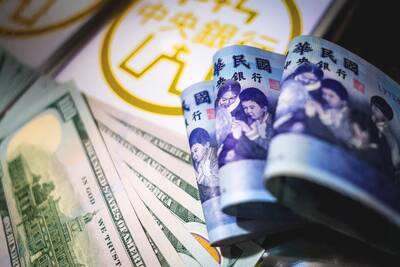Shipments of tablet PCs by computer makers Acer Inc (宏碁) and Asustek Computer Inc (華碩) increased in the third quarter thanks to higher demand for low-cost Android models, the tech-tracking firm International Data Corp (IDC) said yesterday.
Asustek shipped 3.5 million tablets in the July-to-September period, up 53.9 percent year-on-year. That put it in third place globally with a market share of 7.4 percent, IDC said in a report.
Acer remained the fifth-largest tablet vendor globally with a 2.5 percent market share, shipping 1.2 million units in the third quarter, an increase of 346.3 percent from 300,000 units in the same period last year.
Apple Inc remained the top global vendor with shipments of 14.1 million units, but its market share slid to a record low of 29.6 percent, and Samsung Electronics Co was in second place with shipments of 9.7 million units and a 20.4 percent share of the worldwide market. China’s Lenovo Group Ltd (聯想) ranked fourth, recording shipments of 2.3 million units and a 4.8 percent share.
IDC said global tablet shipments grew to 47.6 million units in the third quarter, representing 7 percent quarterly growth and a 36.7 percent annual increase.
Private-label “white-box” tablets continue to constitute a fairly large percentage of the Android devices shipped into the market, said Tom Mainelli, research director of tablets at IDC.
“These low-cost Android-based products make tablets available to a wider market of consumers, which is good,” Mainelli said.
IDC forecast that Apple will enjoy robust shipment growth in the fourth quarter, as the new iPad Air will start shipping today.

Taiwan Semiconductor Manufacturing Co (TSMC, 台積電), the world’s biggest contract chipmaker, booked its first-ever profit from its Arizona subsidiary in the first half of this year, four years after operations began, a company financial statement showed. Wholly owned by TSMC, the Arizona unit contributed NT$4.52 billion (US$150.1 million) in net profit, compared with a loss of NT$4.34 billion a year earlier, the statement showed. The company attributed the turnaround to strong market demand and high factory utilization. The Arizona unit counts Apple Inc, Nvidia Corp and Advanced Micro Devices Inc among its major customers. The firm’s first fab in Arizona began high-volume production

VOTE OF CONFIDENCE: The Japanese company is adding Intel to an investment portfolio that includes artificial intelligence linchpins Nvidia Corp and TSMC Softbank Group Corp agreed to buy US$2 billion of Intel Corp stock, a surprise deal to shore up a struggling US name while boosting its own chip ambitions. The Japanese company, which is adding Intel to an investment portfolio that includes artificial intelligence (AI) linchpins Nvidia Corp and Taiwan Semiconductor Manufacturing Co (TSMC, 台積電), is to pay US$23 a share — a small discount to Intel’s last close. Shares of the US chipmaker, which would issue new stock to Softbank, surged more than 5 percent in after-hours trading. Softbank’s stock fell as much as 5.4 percent on Tuesday in Tokyo, its

COLLABORATION: Softbank would supply manufacturing gear to the factory, and a joint venture would make AI data center equipment, Young Liu said Hon Hai Precision Industry Co (鴻海精密) would operate a US factory owned by Softbank Group Corp, setting up what is in the running to be the first manufacturing site in the Japanese company’s US$500 billion Stargate venture with OpenAI and Oracle Corp. Softbank is acquiring Hon Hai’s electric-vehicle plant in Ohio, but the Taiwanese company would continue to run the complex after turning it into an artificial intelligence (AI) server production plant, Hon Hai chairman Young Liu (劉揚偉) said yesterday. Softbank would supply manufacturing gear to the factory, and a joint venture between the two companies would make AI data

DOLLAR SIGNS: The central bank rejected claims that the NT dollar had appreciated 10 percentage points more than the yen or the won against the greenback The New Taiwan dollar yesterday fell for a sixth day to its weakest level in three months, driven by equity-related outflows and reactions to an economics official’s exchange rate remarks. The NT dollar slid NT$0.197, or 0.65 percent, to close at NT$30.505 per US dollar, central bank data showed. The local currency has depreciated 1.97 percent so far this month, ranking as the weakest performer among Asian currencies. Dealers attributed the retreat to foreign investors wiring capital gains and dividends abroad after taking profit in local shares. They also pointed to reports that Washington might consider taking equity stakes in chipmakers, including Taiwan Semiconductor